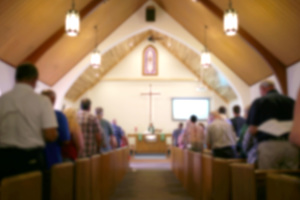Are you Slacking if you’re Napping at Work?
Maybe not...
Have you ever been caught grabbing a bit of shut-eye at your desk—or maybe sleeping underneath it? What was your excuse? New sleep research may be your best answer.
A 2002 study from Harvard University considered worker burnout over four days of training and the effect of napping. Typically, workers began to experience burnout as the four days of training wore on. The study found that workers who were allowed to take a 30-minute nap on the second day of a four-day training session experienced less decline in visual tasks. A one-hour nap was actually found to return performance back to normal in the last two sessions.
That is not to say that curling up for an hour or so at the office should be sanctioned, but keeping it to less than 30 minutes might not be so far-fetched. It seems that half-hour naps should not only be recognized as acceptable by companies, it’s beneficial. This is old news to many European countries where afternoon siestas are standard practice and many shops close for an hour or so each afternoon.
Afternoon drowsiness is a major problem for many corporations—it is estimated that lost productivity costs billions. A possible obvious solution is to allow 20 to 30 minutes of napping per day when it is deemed necessary, creating a work environment that may actually help to boost workplace productivity rather than hinder it. However, in today’s fast-paced society and tough economy, most companies frown on napping in the workplace rather than encourage it.
Can’t squeeze in a nap? Use these tips to boost your energy during the day:
1. Taking a good quality multivitamin at breakfast, lunch and/or dinner may help prevent your afternoon energy lull. The Truestar Vitamin Plans can help determine which vitamins are best for you.
2. Avoid eating too many carbohydrates, such as breads or pastas, at lunch and be sure to have some protein with your meal. Also, avoid sugary snacks—they will just cause you to crash later on. See the Truestar meal plans for ideas.
3. Always have water at your desk. Dehydration is a very common cause of fatigue and headaches.
4. Taking a liquid vitamin B complex after lunch may give you a boost.
5. Green tea is a better alternative to the caffeine in coffee or tea and it may actually help weight loss and blood sugar regulation.
6. Go for a walk around the block to get some fresh air. A change of scenery will wake you up and provide a clear perspective.
7. Exercise, exercise, exercise! I promise—you will not believe the increase in your energy if you follow your Truestar Exercise Plan in the morning!
8. Use the Truestar Healthy Sleep Tips to ensure you are getting optimal benefits from your sleep.
9. If fatigue is a chronic problem for you, consider the Truestar Supplement Plan for Fatigue. See your doctor if your symptoms worsen or do not improve.



























